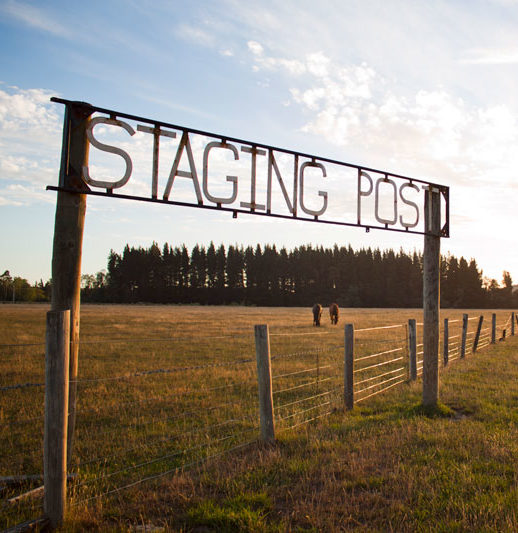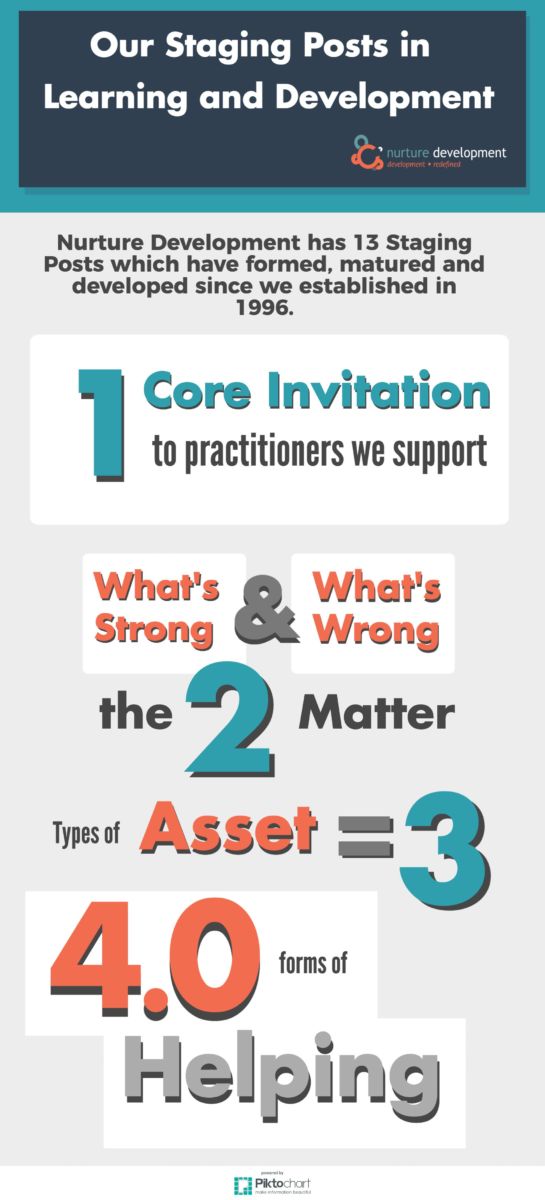
Our 13 staging posts in Learning and Development – part 1
With this first blog of 2017, we are feeling feistier and more determined than ever to contribute to the discovery and enlargement of free space for citizen action.
This year will be Nurture Development’s 21st birthday. The journey since 1996 has included many days and even months of confusion and doubt, but every so often there were moments of real clarity. In hindsight, it is now perfectly clear to us that a necessary prelude to all our learning was confusion, and a gnawing sense that we were off track. Over the years we figured out there was no track, or as Tom Dewar (a Nurture Development associate) says ‘there is no map, only a compass’.
Those moments of clarity typically declared themselves to us when we chilled out, stopped panicking and really listened. It was during periods of pause; places where our journey was broken, stopover points so to speak, where we rested up, got some new supplies and our bearings again, that we also regained perspective. Like staging posts, such moments have punctuated the last two decades of our work and now, as we look forward, we hope they will illuminate the path ahead.
So, to start this year’s blogging, we will share the 13 staging posts that have imprinted themselves onto how we work. Over the next few weeks, we will unpack the detail of these, but for now here’s a flavour of the first four:
#1. Our first staging post has become like a wise old friend to whom we return most regularly – when working with practitioners and organisations keen to transition from a direct service provision model to a facilitative approach. It is our core invitation:
Instead of asking how you or your organisation can create more value to/for or with communities, ask how you can create more space for community to create what they value.
#2. The second staging came with the recognition that effective community work is not about ignoring what is wrong and solely focusing on what is strong. Instead, it is about recognising that both problems and capacities need to be acknowledged, appreciated, and addressed. That said, we believe the best way to do that is to start with what is strong, and to use what’s strong to address what’s wrong, and make what is strong even stronger.
#3. The third staging post relates to the growth of citizen power, and the importance of calling people’s attention to the three levels of assets:
- Primary assets, which are local and within residents’ control.
- Secondary assets, which are local but not within resident’s control.
- External assets, which are neither local nor in resident’s control.
Much of our work has been to accompany people as they shift their change-making efforts from attempts at influencing external forces as their starting point, while neglecting internal (local) capacities and cultural, environmental and economic assets, to a process which intentionally starts with the discovery, connection and mobilisation of primary assets; working from inside out. By reversing the order and building power from inside out, citizens assume a much stronger position to effect change. We have written about the process by which this unfolds in Question the Questionable Questions.
#4. The fourth staging post came quite recently. We have recognised the importance of naming that there are three dominant types of helping at play in most contexts within which we work. These are: relief, rehabilitation and advocacy. Each of these has its place in the right dosage so to speak, but which if over done can disable. It is important to show respect for role that practitioners play in delivering supports across these three styles of helping. However we look to help in a fourth and distinct way which is not about service delivery or advocacy, but about community power and the discovery and enlarging civic space and associational life. It also became clear to us that many practitioners are very committed to cultivating practices that enables community power to grow and are prepared to do the hard work of disrupting the parts of their systems that do harm to community building efforts. We believe strongly in the importance of coming alongside such practitioners and supporting their efforts. We will write more about these four approaches to helping over the next few weeks. Recently Shaun Burnett head of Community Building at Nurture Development wrote about this fourth expression of helping, and you can read about it here, and here .
Over the next week, we’ll publish parts 2 and 3, unpacking the remaining 9 staging posts of learning and development. As always, we welcome comments, thoughts and feedback, for without it we’ll never learn.
3 Part Series
Part 1 found here
Part 2 found here
Part 3 found here

